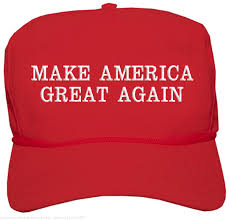By Douglas V. Gibbs
Tariff is a beautiful word, according to President Donald Trump. It’s a tax, it’s a tool, and it has the financial world and the media in full-blown meltdown. Their argument is that tariffs cause inflation, hinders the global market of free trade, and the markets are plunging as a result. Oh, and he is somehow a fascist for using them. According to the experts and analysts, Trump’s tariffs are a disaster…
…except, they’re not.
President Trump’s sweeping tariffs have hit China at 54%, Japan at 24%, India at 26% and the European Union at 20%. And that, my friends, is all the media will tell you about the numbers.
What about the tariffs other countries hit us with? How is it proper that other countries slam us with tariffs, but if we return the favor we are going to plunge the world into chaos?
Prior to President Trump’s recent tariffs, China has imposed:
- 15% tariffs on coal and liquefied natural gas products.
- 10% tariffs on crude oil, agricultural machinery, and large-engine cars.
- 25% tariffs on aircraft, automobiles, soybeans, and chemicals.
- 25% tariffs on medical technology.
Prior to President Trump’s recent tariffs, the United States imposed:
- In 2017 the average tariff rate on Chinese goods was about 3.1%.
Japan, in the past, has been a little bit friendlier to the United States when it came to tariffs.
- 15% tariff on imported U.S. cars (though at one time long ago it was 0%).
- Up to 5% on U.S. technology and electronics.
- Typically below 5% for general manufacturing.
However, let’s also not forget that…
- Japan has historically hit the United States with up to a 38.5% tariff on agricultural products, particularly on beef imports.
Prior to President Trump’s recent tariffs, the United States imposed a tariff rate on Japanese imports typically ranging from:
- Up to 5% on all imports from Japan.
Prior to President Trump’s recent tariffs, India imposed:
- Up to 70% on imported U.S. motorcycles and cars.
- Up to 50% on agricultural products, with even higher rates on American dairy and
poultry products.
- Up to 20% on technology and electronics.
- 5% to 10% on general manufacturing.
Prior to President Trump’s recent tariffs, the U.S. tariff rate on Indian imports was:
- Generally between 5% and 10%.
Prior to President Trump’s recent tariffs, the European Union charged against U.S. products:
- 10% on imported U.S. Cars.
- 5% to 25% on American agricultural products.
- Up to 14% on technology and electronics.
- Up to 5% on general manufacturing.
Prior to President Trump’s recent tariffs the U.S. imposed:
- 5% on European cars.
- 10% on all other general merchandise.
Canada imposed very high tariffs on U.S. products:
- 200% (or more) on certain U.S. dairy imports.
- 1% on U.S. automobiles.
- Up to 20% on agricultural products, with even higher rates on poultry and eggs.
- Up to 5% on technology and electronics.
- Up to 5% on general manufacturing.
Meanwhile, the U.S. tariffs on Canadian products:
- 5% to 20% on dairy products.
- 5% on automobiles.
- 25% on light trucks.
- 10% on agricultural products.
- Up to 5% on technology and electronics.
- Less than 5% on general manufacturing.
Mexico has historically maintained relatively low tariffs against U.S. products:
- 10% on automobiles.
- Up to 20% on agricultural products, but higher on dairy and meat.
- Up to 15% on technology and electronics.
- Less than 5% on general merchandise.
Still, America’s rates against Mexican products tended to be lower than Mexico’s tariffs:
- 5% on automobiles.
- Up to 10% on agricultural products.
- Up to 5% on technology and electronics.
- Less than 5% on general manufacturing.
Looking at the numbers, free trade has been anything but fair. The United States has paid higher tariffs to all of our trading partners than what we were charging them. And those numbers I found were through Google and Bing – I wouldn’t be surprised if the numbers against the United States have been higher, in some cases.
While a tariff is indeed a tax, it is a tax that consumers do not have to pay. There are American alternatives to foreign products. Buy products manufactured in the United States and the tariffs don’t affect you. And if we don’t manufacture certain things, we need to be and the reason we don’t is because of poor historical decisions regarding tariffs and “free trade.”
We are beginning to already see positive results to President Trump’s tariffs, and in the case of Europe we are looking at a possibility of a zero-for-zero agreement which in the end is the whole point.
It’s all about economics. The cost of doing business. If the cost of doing business goes up then as a business owner you will take actions to either reduce the cost of doing business, or you will have to raise prices. If prices go up, and you can’t compete, then reducing the cost of doing business becomes a priority. Sometimes it might be accomplished by reducing the hours of workers, decreasing the size of the workforce, increasing automation, reducing quality, changing around the raw materials you use, or a whole other host of options. If the way to reduce the cost of doing business is to do business in the United States, then the choice is obvious.
In the end, tariffs protect our economy by securing manufacturing. It is not “protectionism” in the manner the liberal progressive Marxist left might categorize it, for we are still working with our trading partners on the international stage. Free trade is no good, however, if it isn’t smart trade. Smart trading is more important than free trade and allows for a certain amount of “protection,” which is a good thing for domestic economies.
A push for globalism, which goes back way beyond the dawn of the twentieth century, has done what it could to demonize tariffs because tariffs are good for sovereignty and domestic economies. Globalism abhors individualism, even when it comes to looking out for one’s individual country. Markets are plunging because President Trump’s policies are not good for globalism, and because President Trump is treading in uncharted waters – uncharted because the globalists have known all along the treasures for a sovereign country should they navigate into those economic waters that have been falsely demonized. The markets are plunging and the left is in destruction mode because they are afraid. Afraid of Trump, and afraid that the truth about the importance of free market principles and a supply-side economic stance may become apparent and understood by the general public. And if that happens, all of the work of creeping incrementalism to convince The West to give in to socialism will shatter into pieces, and they may not be able to win another election anytime soon.
— Political Pistachio Conservative News and Commentary



